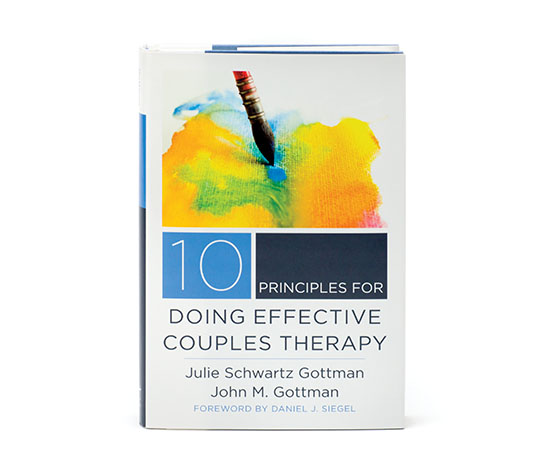If you’re like most clinicians, you want to maximize your time with patients. This makes sense, given the fact that you’re trained to provide medical services. However, marketing your practice—specifically building your client list—is also important. Building this list is an investment in the viability of your business, and it’s usually worth every minute of effort that’s required.
From a small business perspective, you should always be thinking about building your client base, says Fletcher Dennison, Chief Operating Officer at SimplePractice. This is essentially your customer list, he adds.
Building a client list is critical when first starting your practice, but it’s also an important task on which you should focus throughout your career, says Dennison. Here are several reasons why:
- It takes time. Building a client list doesn’t happen overnight. It can take some clinicians months or even years to build a list that supports a full caseload, says Dennison.
- Client volume ebbs and flows. Multiple clients could terminate at the same time, or you could have seasonal fluctuations, both of which could leave you with gaps in your schedule. A waiting list of clients can help fill these gaps and ensure consistent cash flow, says Dennison.
- You may eventually want to expand your practice. Even if hiring another clinician or expanding into a group practice isn’t on your radar right now, that could change in the future. Growing your client list can help you achieve these and other financial goals, says Dennison.
- You may eventually want to move your office location. It will be harder for you to make the move if you don’t proactively focus on building your brand, says Dennison. If you have a larger client list, you have more options as a practice owner, he adds.
Know who to target
Before you can build your client list, you need to identify your ideal client—that is, the type of individual who can benefit most from your services.
Listen to yourself and your instincts, says Dennison. Ask yourself this question: Who do you want to spend most of your time treating?
Be really clear on what interests you or what you think interests you, says Howard Spector, CEO of SimplePractice. You can always change your mind, but start with something. That will help you identify your ideal client, he adds.
Over time, most clinicians can—and should—specialize, says Spector. For example, do you want to specialize in treating children vs. adults? Couples vs. individuals? Certain diagnoses or problems? Sometimes clinicians don’t want to turn anyone down because they don’t want to lose a customer, says Spector. However, if you can be more specific about what it is you do and who you want to serve, people—including other clinicians—are going to remember you. Over time, you can portray yourself as a specialist or expert, he adds.
Take a strategic approach
Once you identify your ideal client, consider these five steps to build your list:
- Build relationships with other clinicians. Send a letter to other local clinicians letting them know that you’re accepting new clients and that you would appreciate any and all referrals, says Dennison.
- Register your practice on Google business. This literally only takes a few minutes to do, and it can significantly improve your business’ ranking in search results, says Dennison.
- Claim your profile on Yelp. Potential clients often use this website to find providers in their local area, says Dennison.
- Ensure that you’re included in directory listings. When potential clients perform a Google search for clinicians in your zip code, what directories appear? Make sure your name is included in these listings, says Dennison. For example, Psychology Today is a well-known directory that compiles information about mental health providers, making it easy for users to search specific criteria. There may be a small cost associated with joining some of these directories, but it’s very worthwhile to do so—and it’s also a tax-deductible expense, he adds.
- Share your knowledge. For example, if you’re a therapist, provide a free mindfulness class to the public or a free talk about living with chronic pain. If you’re a dietitian, provide a free class on living with a gluten allergy. Use these opportunities to subtly advertise your own services, says Spector. Provide value to other clinicians and patients, and when they need your services, they’ll remember you and reach out, he adds.
Avoid these common mistakes
When building your client list, it’s easy to fall into traps that can stall or even prevent success. Consider the following mistakes some clinicians make:
- Trying to take shortcuts. There’s no easy way to grow your client list, says Dennison. For example, many people look at paid ads as a way to overcome their discomfort with networking. Although paid ads can be helpful, they don’t replace the need to network and send referral letters, he adds.
- Becoming preoccupied with busy work that yields no return on investment. Some clinicians prioritize tasks that are easy but not necessarily the most effective, says Dennison. For example, it may be easier and faster to rewrite web copy that goes virtually unnoticed than to go to a networking event that could lead to actual referrals, he adds.
- Trying to build Rome in a day. When learning about how to build your client list, it’s easy to become overwhelmed by reading books and attending seminars, causing some clinicians to suffer from information overload that leads to analysis paralysis, says Spector. Instead, focus on high-value, low-effort tasks first (e.g., registering on Google business) before branching out into other projects.
- Being unprepared to convey your value. Once potential clients start contacting you, you need to be able to answer this question: Why should someone pay for your services? If you can’t convey this, you run the risk of losing a potential customer. To convey value, Dennison says to focus on your passion for the job and the benefits clients have experienced from having worked with you.
- Building your list—then doing nothing with it. Focus on active clients who become inactive as well as clients who contact you but never follow through with an appointment. It may be appropriate to email or call these individuals to remind them of your services, says Dennison. Some clinicians may have the time and resources to send a newsletter or marketing brochure. The goal is to identify what task will provide the most value and then take steps to make it happen, he adds.
- Not responding quickly to potential new clients. The faster you respond to an initial client inquiry, the more likely you are to land that client as a paying customer, says Dennison. When it takes 24 hours or more for you to respond, you run the risk of losing that client to another clinician or the client may no longer be interested in your services. Strike while the iron is still hot, he adds. For example, consider an online booking solution or a Google voice number. Many times, clients are looking for clinicians after normal business hours, says Dennison. Don’t make them take extra steps just to reach out. Always make sure your schedule can accommodate a new client as quickly as possible.
Set small goals, and take steps to build your client list one day at a time. It will pay off, and your business will continue to thrive, allowing you to do what you do best: provide stellar patient care.
This article originally appeared on SimplePractice. Sign up for SimplePractice today and receive three months for the price of one. Get started here.
Sign up for the Love Notes Newsletter
Get the latest on relationships, parenting, therapy and more from the experts at The Gottman Institute, plus get a FREE download every month!
.









